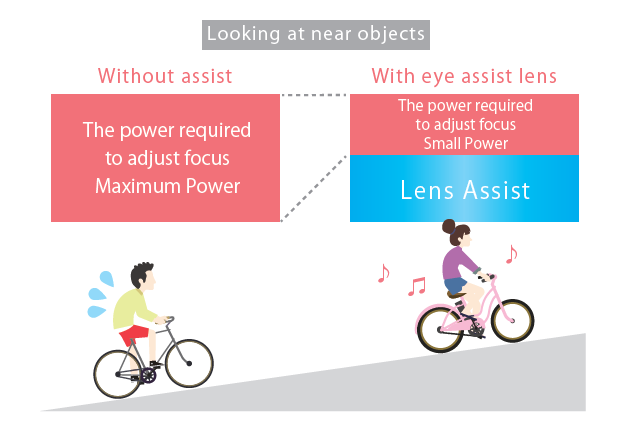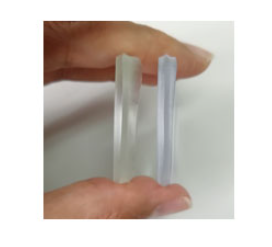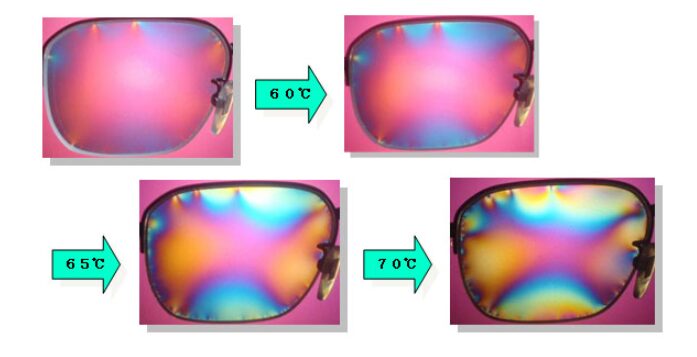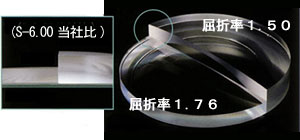We usually receive many inquiries about the maintenance of lenses. This time, we provide advice on the basic cleaning and maintenance of lenses to enable you to comfortably use purchased eyeglasses for many years to come.
“What should I do if the lenses of my eyeglasses get dirty?” We occasionally receive such a question. Basically, clean lenses with running water (and use a neutral detergent if the lenses are seriously dirty), press tissues against the lenses to wipe off water, and finally wipe them lightly with a dedicated lens wipe. When wiping the lenses lightly, specifically, it is appropriate to apply force equivalent to it when picking up a sandwich.

If fine dust, for example, adheres to lenses, it is the best way to lightly clean them with running water as described above. However, if water is not available to clean the lenses, it is recommended to blow dust off with a breath or make the surfaces of the lenses slippery with the moisture of a breath. However, do not fail to wipe the lenses lightly to remove moisture.
Most scratches are caused by dry wiping under strong force with a foreign substance remaining on the surfaces of the lenses. If a dedicated lens wipe is not available, we recommend using soft tissues instead of a cloth or towel because they may also cause scratches.
Even when a dedicated lens wipe is used, fine particles or dust adhere to the surfaces of the lenses at the end of the day. So, we recommend occasionally washing it and using another one. Please keep in mind that dirt and moisture will become a spot or water stain if they are left on the surfaces of the lenses (this is also the case with rainwater and tap water).
The next inquiry is “A spiderweb-like line has appeared imperceptibly on the surfaces of the eyeglass lenses.” They were probably affected by heat. Be aware that plastic lenses are susceptible to heat. Several layers of coatings are applied to the base materials of plastic lenses, and these base materials expand as temperature increases (60°C or higher).
However, anti-reflection coatings applied to the surfaces of lenses are like metals and less expand than plastic lenses. If the lenses expand with heat, the coatings cannot keep up with the expansion and will develop cracks like ground fissures. Such cracks will appear when the lenses are affected by heat, regardless of the years of use. Cracks are very fine and difficult to find at the initial stage, but users often notice something unusual with their lenses when light from the headlamps of oncoming vehicles reflects on them, for example, during driving in the nighttime.

On the other hand, eyeglass users may doubt if the lenses of their eyeglasses are affected by heat in daily lives, and may consider that the impact of heat is within expectations even if they are affected by it. Unexpectedly, however, there are situations in which lenses are affected by heat. Hot air from dryers, fan heaters, etc., hot plates and charcoal fire used for barbecue, radiated heat from stoves, open-air fires, etc., and sandboxes, road asphalt, saunas, and the cabins of cars parked for a long period in summer may all reach and exceed 60°C. In addition, avoid rapid temperature changes. Such situations are not remembered unless you are careful with the impact of temperature. Thus, it is difficult to identify situations in which eyeglass lenses are affected by heat.
Finally, we introduce the inquiry: “The coatings on the surfaces of the lenses came off in spots.” They are probably induced by the impact of chemical products, chemicals, etc.
For example, such a phenomenon occurs when a spray type chemical product, such as a mold remover is used. The sprayed liquid adheres to eyeglass lenses in the form of small particles and is difficult to notice. Users are advised to wear eyeglasses and a mask as a precaution for spraying. However, if a mold remover gets on the surfaces of lenses, the chemical contents erode the surfaces of the lenses in a short time and cause fine spots or film peeling. When spraying a mold remover, wear dedicated goggles or used eyeglasses.
Chemical products, such as alkali and acid detergents, and hairdressing products will also cause the same problem if they are left unremoved from lenses. Whenever a chemical product or hairdressing product spray is used or such a liquid adheres to lenses, keep in mind that the lenses should be immediately cleaned with running water and wiped.

Lenses are unrepairable. If you handle your eyeglass lenses with attention paid to the abovementioned advice at all times instead of taking action in case of the occurrence of something wrong, you will be able to use your eyeglasses comfortably for many years to come.





